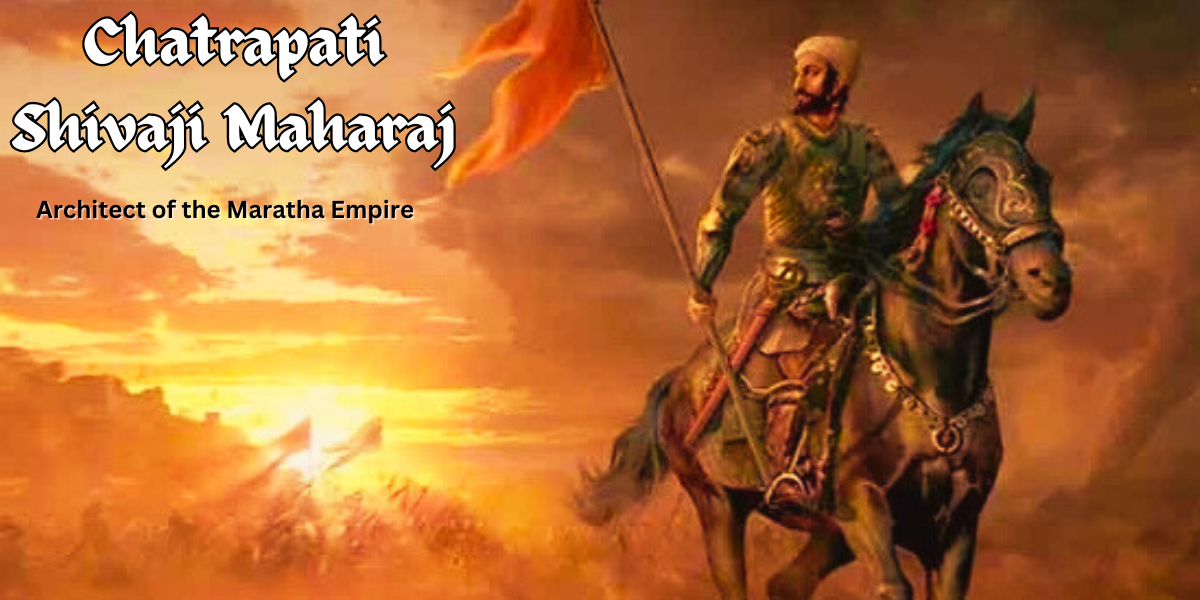Chhatrapati Shivaji Maharaj, a name that resonates through the corridors of Indian history, stands as a beacon of valor, leadership, and strategic brilliance. In this blog, we embark on a journey to unravel the life and legacy of this iconic figure, who not only built a formidable empire but also left an indelible mark on the pages of time.
Early Life and Influences
Shivaji Maharaj was born in 1630 at Shivneri Fort which is in the Junnar district of Pune. Shahaji Bhosale was the father and Jijabai was the mother of Shivaji Maharaj. His father Shahaji Bhosale was a great Maratha general in the army of the Bijapur Sultanate and his mother Jijabai was a great devotee of religion. Shivaji Maharaj’s early life was shaped by the turbulent political landscape of the Deccan. Surrounded by the rich tales of Maratha warriors and the valor of his mother, Shivaji imbibed the spirit of leadership from an early age.
He was the founder of the great Maratha kingdom of India. He was one of the bravest and marvelous rulers in the 17th century.
History:
Chhatrapati Shivaji Maharaj grew up learning the Ramayana and also the Mahabharata. Shivaji Maharaj showed great interest in religious teachings, especially Hindu and Sufi saints. He was educated by his mother Jijabai and also by his guardian Dadoji Kond Deo. Dadoji taught him horse riding, archery, patta and also several other fighting techniques after his father left for Karnataka.
Chattrapati Shivaji Maharaj has eight wives. His first wife was Saibai. The names of the other wives were Soyarabai, Mohite, Putalabai, Palkar, Sakvarbi Gaikwad, Sangunabai, and Kashibai Jadhav. His first wife, Saibai, bore him Sambhaji and three daughters. Soyarabai bore him a son named Rajaram and a daughter named Deepabai. His other children were Rajkunvarbai from his wife Sagunabai and Kamlabai from Sakvarbai. In 1659, his first wife, Saibai, passed away at a very young age due to a prolonged illness.
The 17th century was a time of political change in the Deccan region, with the Mughals, the Bijapur Sultanate and the Golconda Sultanate competing for supremacy. Against this background, Shivaji emerged as a charismatic leader who challenged the status quo and laid the foundation for the Maratha Empire.
Independent Sovereign (Purna Swaraj)
In 1674 during the summer, Shivaji Maharaj had himself enthroned with great fanfare as an independent sovereign. The entire suppressed Hindu majority rallied to him as their great leader. He ruled his domain for almost six years through a cabinet of eight ministers. Chatrapati Shivaji Maharaj who devout Hindu, who prided himself on the protector of his religion, broke the tradition by commanding that two of his relatives who had been forcibly converted to Islam should be taken back to Hinduism.
Even though both the Christians, as well as the Muslims often kept on imposing their creeds on the population by force, he respected the beliefs and protected the religious places of both communities. Along with Hindus, many Muslims were also in his service. After his coronation, his most remarkable campaign was in the south. During this campaign, he allied with the Sultans and blocked the grand design of the Mughals to spread their rule over the entire subcontinent.
Military Genius and Leadership:
Shivaji Maharaj’s military acumen is legendary. His guerrilla warfare tactics, innovative use of forts, and the establishment of the Maratha navy showcased a strategic brilliance that set him apart. The famous escape from Agra, where he outwitted the Mughal emperor Aurangzeb, is a testament to his resourcefulness.

Administrative Reforms
Beyond the battlefield, Shivaji Maharaj was a visionary administrator. He implemented administrative reforms that emphasized justice, meritocracy, and a decentralized governance system. His approach to revenue collection and governance became a model for future leaders.
Fortress Architecture
The towering forts that dot the Sahyadri mountain range stand as sentinels of Shivaji’s vision. These structures were not just defensive bastions but symbols of Maratha power, strategically located to safeguard the kingdom from external threats.
Religious Tolerance
In an era marked by religious strife, Shivaji Maharaj’s commitment to religious tolerance is noteworthy. He respected diverse faiths, fostering an environment where Hindus, Muslims, and others coexisted harmoniously under his rule.
Legacy and Impact
Chhatrapati Shivaji Maharaj’s legacy transcends time. The Maratha Empire, which he laid the foundations of, went on to become a significant force in Indian history. His ideas of governance and military strategy continue to inspire leaders and scholars alike.
How Shivaji Maharaj Died?
Actual reason of death of Chhatrapati Shivaji Maharaj as written by the Sabhsad Bakhar which is considered as the Primary source of History of Shivaji Maharaj, was due to Typhoid like fever, he was ill with the disease for few days. Suffered by dieorea and fever, 350 yrs back there was no treatment for Typhoid. was unfortunate that Maratha Kingdom lost the Greatest king at very early age of 50 yrs.
Conclusion
As we reflect on the life of Chhatrapati Shivaji Maharaj, we are reminded of a leader whose indomitable spirit and visionary leadership shaped the destiny of a nation. His legacy lives on, echoing through the forts, fields, and hearts of those who cherish the essence of true leadership.
FAQ
Question 1) When Shivaji Maharaj Died?
Ans: He died on 3 April 1680
Question 2) How much was the sword of Chhatrapati Shivaji Maharaj?
Ans: An iron plate weighing around 105 kg, a hilt made of 18 kg brass, 14 feet long and 9 inches wide, a 123 kg Bhawani sword was unveiled in front of the equestrian statue of Chhatrapati Shivaji Maharaj.
Share this content:

